In today’s photo gallery, I show you a sequence of events which I witnessed and which involved 3 animals. There is no good guy, bad guy, and the like in this story. It is the cold, no nonsense, survival scheme of nature: to eat or be eaten.
As you will see in the first pic, the main actor is a big red-tailed hawk who was standing on a rock on the hill facing my house.
When I spotted him, my attention was drawn to some movement around him. I went to get my camera with the long focal lens set to maximum. And I saw that it was a mockingbird trying as hard as he could to dislodge the intruder from his territory. This went on for a while until the hawk decided that it had enough and took off. That’s when I got the surprise, as I saw what it was holding in its claws: a snake.
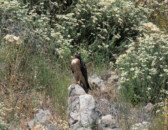
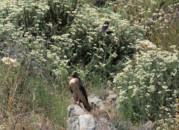
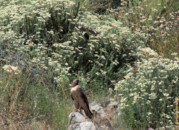
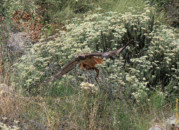
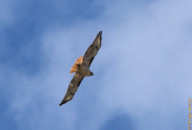
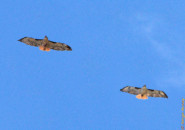
I kept shooting pictures but of course it isn’t easy, as things were happening fast. You can see the hawk taking off with the snake on 2 pictures. Then we are off to the sky where another red-tailed haw joined him. I had never seen anything like this. I believe that it was a couple, because they flew in sync for a while before they disappeared from my sight. The details of the much enlarged pictures show that the snake was a California kingsnake, which I showed pictures of in this post. It seems to me that the hawk had already ripped the snake apart, as you can see some red string dangling from its claws.
Like I was saying earlier, nature is cold. Once the snake was the predator. This time he was the prey. This brings up the question: what is the predator of the hawk? None I would say. It is possible that a coyote could catch a hawk while he is down on the ground attacking another animal. But that scenario seems unlikely, since coyotes are usually most active at night. On occasion, a hawk can become the prey if he’s disabled, by a disease for instance, or if he got wounded during an attack. Another couple of questions you might have: how come the little mockingbird has no fear of the larger hawk? And how come the hawk is not attacking the mockingbird? I will guess that the hawk had his food and didn’t want to have to deal with a little pipsqueak at this moment. Or perhaps he had a much more important mission to take care of: feed the eyas. If you don’t know what’s an eyas, it’s a baby hawk. I just learned this, and that a group of hawks is known as a kettle, a cast or an aerie.
English has plenty of strange names for groups of animals. Did you know that a group of crows is called a murder? Some people really like this as it’s great to make jokes, such as this one which I read in our “dad jokes” channel at work:
What do you call 2 crows hanging out?
…
An attempted murder.
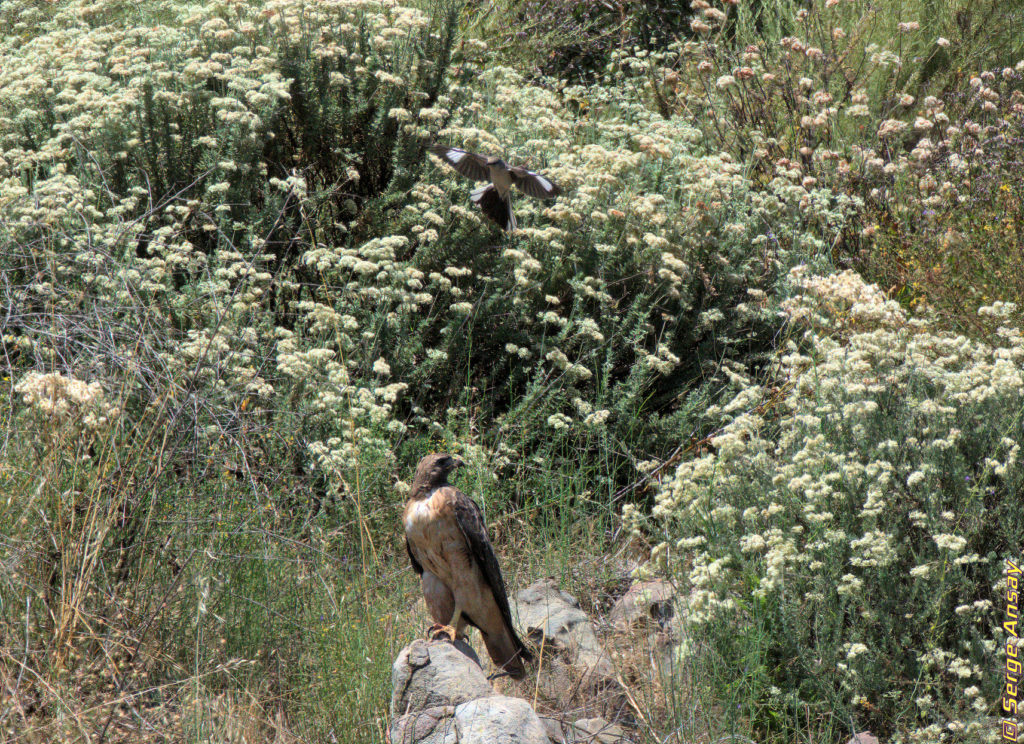






Wow, what a great story/record of an event that not many people get to witness!
Fun fact, a flock of vultures is called a wake. Have fun making a dad joke out of that one.
Thank you very much daughter of mine. Yes, it was most amazing watching this as it happened. Sometimes I think I am more lucky with wildlife than anything else. Some people tell me I am just paying more attention to it than most people. Interestingly enough this bring to mind a comment a friend of mine recently said as I was disparaging the human species: “Serge, dear, I don’t blame you for turning your back on us (we are certainly a cruel species) and focusing on wildlife.”
OK you asked for it.
What does the vulture say to his friends who tell him: “you look rather happy”
…
I joined a wake for a dead horse.